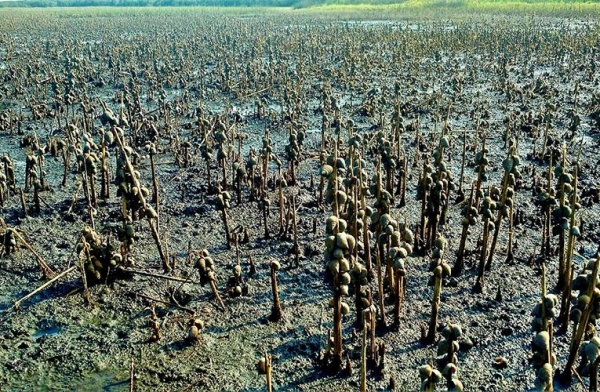Re-establishing plantings of trees, grasses and other vegetation is essential for restoring degraded ecosystems, but a new survey of almost 2,600 restoration projects from nearly every type of ecosystem on Earth finds that most projects fail to recognize and control one of the new plants’ chief threats: hungry critters that eat plants.
“While most of the projects took steps to exclude competing plant species, only 10% took steps to control or temporarily exclude herbivores, despite the fact that in the early stages these plants are like lollipops — irresistible little treats for grazers,” said Brian Silliman, Rachel Carson Distinguished Professor of Marine Conservation Biology at Duke University’s Nicholas School of the Environment.
By not protecting plants in their early states, conservationists are missing out on great opportunities to significantly speed restoration, improve its outcomes, and lower its costs, he said.
Read more at Duke University
Image: Plant-eating snails overwhelm both naturally occurring and artificially planted marsh plants as this ecosystem tries to regrow after drought and grazing. (Credit: Brian Silliman)


